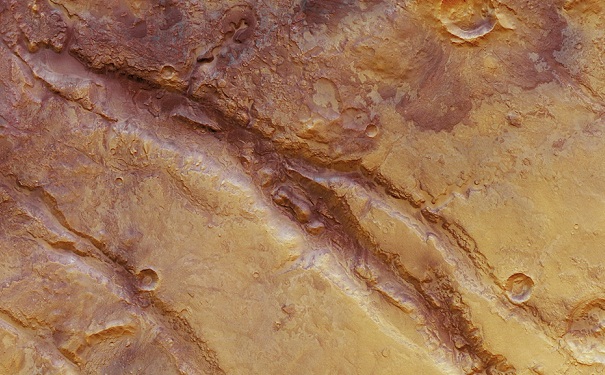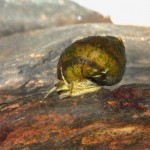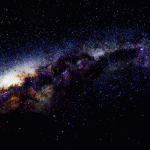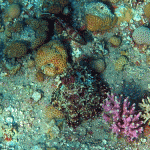
Deep fractures in Nili Fossae. Image: ESA/DLR/FU Berlin (G. Neukum).
Images from Mars Express reveal more about the surface of the red planet.
Newly released images from the European Space Agency’s (ESA) Mars Express have shown a system of deep fractures, known as Nili Fossae, around the Idris basin. Some of these fractures are estimated to be 500 metres deep and are believed to have formed around the same time as the basin.
Nili Fossae is located on the north-western edge of the basin, north-east of the Syrtis Major volcanic province. It was one of the candidates considered by NASA as a landing site for the Mars Science Laboratory rover and, although it was dropped from consideration, it still continues to interest scientists.
The Nili Fossae system is made up of numerous “˜graben’, concentrically orientated around the edges of the Idris basin. Graben refers to the lowered terrain between two parallel fractures or faults in the rocks that collapses when tectonic activity pulls the region apart.
The basin may have been flooded with basaltic lava from Syrtis Major after it was created by an impact. This would have caused subsidence of the basin floor, adding stress to the planet’s crust and resulting in the fractures observed.
Using infra-red sensing spectrometers, the Mars Express has detected areas in Nili Fossae that may contain clays. While the lava would have buried these deposits, the area has been pierced by impact craters, such as the strongly eroded crater, measuring 12 kilometres across, in the bottom right of the images and the smaller (3.5 kilometres) crater near the centre.
The clays would have been formed as rocks were weathered by water and the minerals within them suggest that the water was warm, even hot. This is good news for scientists hunting for any signs of life.
Observations from telescopes have shown a significant enhancement in atmospheric methane over the Nili Fossae. This indicates that methane may be produced here from a geological or biological source.
In 2016 ESA and NASA will launch the ExoMars Trace Gas Orbiter to investigate the origin of methane on Mars. Nili Fossae will be one of the regions investigated.






